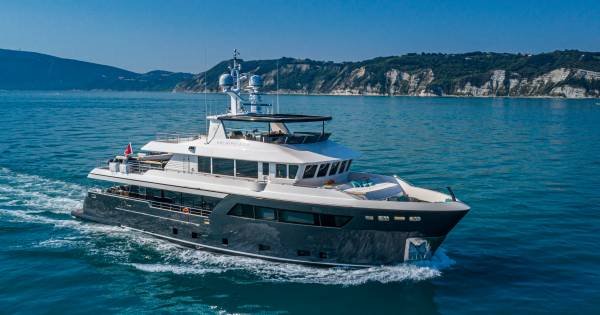But much smaller systems also matter. Heesen’s Van Der Zanden says that bow thrusters, propulsion devices built into the front of a boat to help with manoeuvring, tend to be especially noisy, owing to the action of their small, fast-moving propellers on the surrounding water. Consequently, there’s increased experimentation to make a concept first introduced in 2005 suitable for ever larger craft — the shaft-less, electrically powered bow thruster, which makes use of magnetic rings with composite blades for much quieter action. Meanwhile, Centek Marine, a US-based specialist maker of ventilation and exhaust systems for superyachts, has developed an apparatus that separates waste gas and water. Why so? Because typically these are ejected and splash into the sea. Centek’s innovative system allows the water component to empty silently below the boat’s waterline. “Reducing noise is about that level of detail now. We’re constantly trying to find ways of moving air [around a boat] with less noise, such as trying different pitches for the blades,” explains Tom Hodges, Director of Centek. The company is also driving the latest iterations of wet exhaust systems — introduced in the 1970s and making use of seawater to cool the heat exchanger and other parts, but also because that water helps muffle the sound — so they’re useable on larger, 70m-plus boats that have long been limited to dry systems. Hodges laments that, for many boat builders, “sound attenuation”, as the experts like to call it, still takes a back seat, but attitudes are changing.




